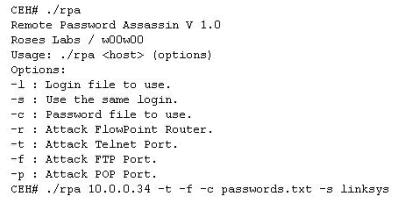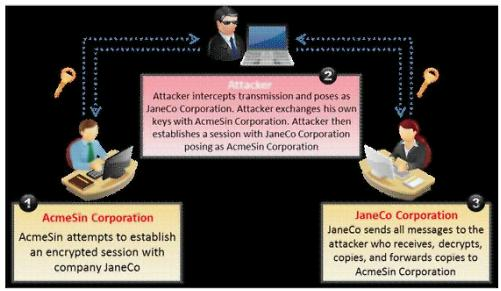GAQM Certified Professional Ethical Hacker (CPEH) CPEH-001 Exam Practice Test
NSLookup is a good tool to use to gain additional information about a target network. What does the following command accomplish?
nslookup
> server
> set type =any
> ls -d
Answer : D
If DNS has not been properly secured, the command sequence displayed above will perform a zone transfer.
WPA2 uses AES for wireless data encryption at which of the following encryption levels?
Answer : C
Finding tools to run dictionary and brute forcing attacks against FTP and Web servers is an easy task for hackers. They use tools such as arhontus or brutus to break into remote servers.

A command such as this, will attack a given 10.0.0.34 FTP and Telnet servers simultaneously with a list of passwords and a single login namE. linksys. Many FTP-specific password-guessing tools are also available from major security sites. What defensive measures will you take to protect your network from these attacks?
Answer : A, B, C, E
A penetration tester is conducting a port scan on a specific host. The testerfound several ports opened that were confusing in concluding the Operating System (OS) version installed. Considering the NMAP result below, which of the followingis likely to be installed on the target machine by the OS?
Starting NMAP 5.21 at 2011-03-15 11:06
NMAP scan report for 172.16.40.65
Host is up (1.00s latency).
Not shown: 993 closed ports
PORT STATE SERVICE
21/tcp open ftp
23/tcp open telnet
80/tcp open http
139/tcp open netbios-ssn
515/tcp open
631/tcp open ipp
9100/tcp open
MAC Address: 00:00:48:0D:EE:89
Answer : D
The use of alert thresholding in an IDS can reduce the volume of repeated alerts, but introduces which of the following vulnerabilities?
Answer : A
Assuring two systems that are using IPSec to protect traffic over the internet, what type of general attack could compromise the data?
Answer : D, E
To compromise the data, the attack would need to be executed before the encryption takes place at either end of the tunnel. Trojan Horse and Back Orifice attacks both allow for potential data manipulation on host computers. In both cases, the data would be compromised either before encryption or after decryption, so IPsec is not preventing the attack.
What type of attack is shown in the following diagram?

Answer : A